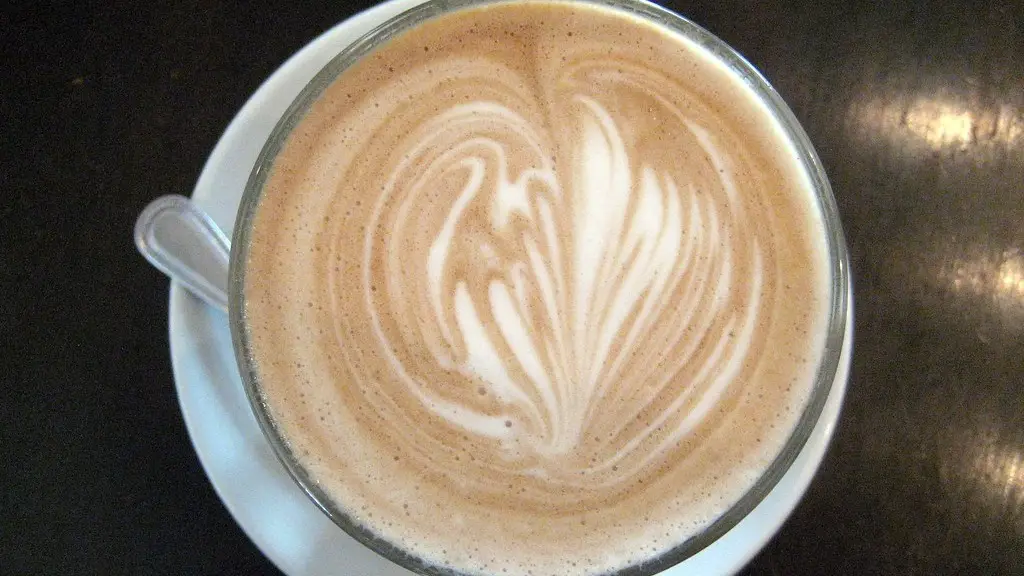What is Cold Brew Coffee?
Cold brew coffee is becoming increasingly popular as a form of coffee preparation. It is created by steeping coarsely ground coffee beans in cold or room-temperature water for an extended period of time. The result is a less acidic cup of coffee compared to traditionally brewed coffee, which can taste mellower and sweeter. Cold brew has gained considerable traction over the past few years, with salads and varieties of drinks offered at different cafés and restaurants, as well as in supermarkets.
How Does Cold Brew Differ from Iced Coffee?
Many people mistake iced coffee for cold brew, but there are some important distinctions between the two drinks. Iced coffee is created by simply pouring hot coffee over ice. As a result, the flavor can be quite different from cold brew, as the heat from the coffee intensifies the acidic flavors. Cold brew, on the other hand, is made from coffee that has been brewed in cold or room temperature water for an extended period of time, often resulting in a sweeter and smoother taste.
Caffeine Content in Starbucks Cold Brews
As with other coffee drinks, the amount of caffeine in Starbucks’ cold brews varies depending on the location and type of beans used. Generally, cold brews at Starbucks contain slightly less caffeine than regular coffee, with a Grande cold brew containing between 115 mg and 130 mg of caffeine. For comparison, a Grande cup of regular brew contains approximately 150 mg of caffeine.
Other Factors That Affect Caffeine Content in Cold Brew
The amount of caffeine in cold brews can also be affected by other factors such as the type of beans used, the strength of the grind, and even the water temperature. Cold-brewed coffee is made by steeping the grounds in cold or room-temperature water, which can make the extraction process longer and result in less caffeine in the final drink. Additionally, smoother, darker roasts tend to contain more caffeine than lighter roasts, and arabica beans typically contain more caffeine than robusta beans.
The Benefits of Cold Brew Coffee
In addition to its lower caffeine content, cold brew coffee offers numerous other health benefits. It is easier on the stomach than hot coffee, making it a good choice for those who suffer from acid reflux or other digestive issues. Additionally, the lower acids in cold brew can also reduce the risk of tooth sensitivity and decay. Studies have also suggested that cold brew can help to improve mood, reduce stress, and promote alertness.
Is Cold Brew Coffee Better for You?
While cold brew may offer certain health benefits, it is still important to remember that all coffee contains a fair amount of caffeine. Too much caffeine can lead to insomnia, headaches, and other health issues, so it is important to consume cold brew in moderation. However, if you are looking for an afternoon pick-me-up without the accompanying jitters, cold brew can be an excellent alternative to regular coffee.
Can You Make Cold Brew at Home?
Making cold brew coffee at home is a relatively simple and cost-effective process. All you need is coarsely ground coffee beans, cold or room-temperature water, and a jar or airtight container. Simply combine the grounds with the water and let steep in the refrigerator for at least 16 hours. Then, simply strain the coffee concentrate, dilute it with cold water or milk and enjoy!
Choosing the Right Coffee Beans for Cold Brew
The type of coffee beans you choose for your cold brew can have a significant impact on the taste, acidity and caffeine content of your final cup of coffee. If you are looking for a smooth and mellow cup of coffee, a light to medium roast containing Arabica beans would be the best choice. For a bolder, more intense flavor, a medium-dark to dark roast containing robusta beans is recommended.
Diluting the Cold Brew Concentrate
After the cold brew steeps over 16 hours, it is important to dilute the concentrate with cold or room-temperature water and/or milk. Depending on your preferences, you can adjust the ratio anywhere from 1:1 to 1:3. For a stronger brew, it is best to add less water while a milder brew should be diluted with more liquid.
Adding Sweeteners or Creamers to Cold Brew
Many people enjoy adding sweeteners or creamers such as sugar, honey, syrups, or dairy products to their coffee drinks. When adding sweeteners to cold brew coffee, it is important to keep in mind that the added sugar and creamers can result in the caffeine content of the beverage being higher than the coffee’s original caffeine content.
Tips for Drinking Cold Brew Safely
Since cold brew coffee contains caffeine, it is important to drink it in moderation. The general rule is to not exceed 400 mg of caffeine a day. Additionally, it is important to monitor your intake of added sugar and creamers, as these can also contribute to excess caffeine consumption. Finally, be sure to use freshly ground coffee beans to ensure maximum flavor and safety.


